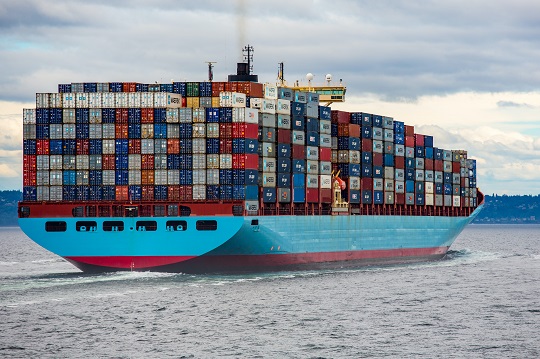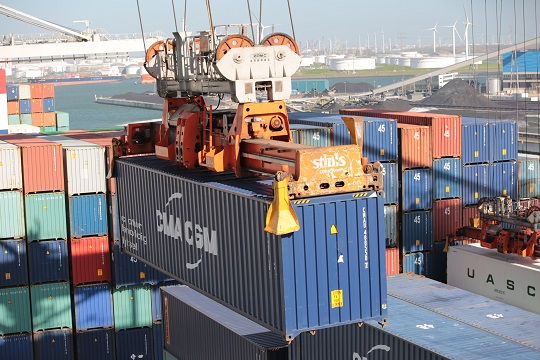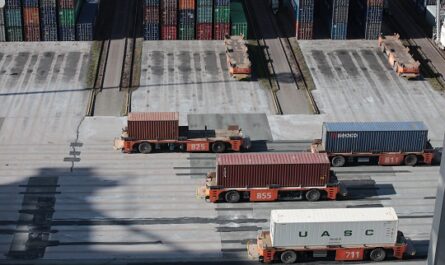Shipping goods is crucial for businesses to reach customers across different locations. However, a common challenge is the risk of goods getting damaged during transit. When items arrive damaged, it hurts your profits and makes customers unhappy.
This blog post will explore why shipping damage happens, its effects, ways to prevent it, and who’s responsible, especially when using third-party logistics (3PL) services.
Before we go further into this topic, don’t forget to follow my LinkedIn account. You’ll get more helpful insights on supply chain management there.
Table of Contents
Causes of Shipping Damage
There are many reasons why items can get damaged during shipping.
Inadequate Packaging
Poorly packaged items are more likely to get damaged during shipping because they aren’t protected well enough.
When items aren’t packaged properly, they don’t have enough cushioning to keep them safe from bumps and rough handling. This means they can easily shift, bump into each other, or break during transportation.
Fragile items are especially at risk if they’re not packed securely.
Additionally, without the right sealing and protection from things like moisture or dust, goods can get damaged or lose quality before they reach their destination.
Handling Issues
Rough handling during loading, unloading, and transportation is risky for shipped products because it can make items move around, bump into each other, or even fall, causing damage. This can happen because of rushed loading, improper stacking of cargo, or careless handling by workers during transit.
When products are packed tightly together, they might rub against each other and get scratched or dented.
Fragile items are especially at risk of breaking if they’re not handled carefully.
To prevent damage from rough handling, it’s important to have strict rules and train workers well on how to handle shipments safely.
Environmental Factors
Extreme temperatures, humidity, and moisture can harm goods during transit, causing damage or decay.
Temperature changes can warp or melt sensitive materials, while high humidity can lead to corrosion or mold growth, especially on items like electronics or textiles.

Prolonged exposure to moisture can also weaken packaging, making it less effective at protecting the contents.
Transportation Incidents
Accidents or mishaps during transportation, like crashes or container accidents, can cause serious damage to shipments. These incidents can happen because of bad weather, mechanical problems, or mistakes by people.
When there’s a crash, packages might move around, fall, or get damaged from the impact.
Container accidents, like stacks collapsing or train derailments, can even lead to cargo being lost or destroyed.
To prevent damage during transportation, it’s important for businesses to focus on safety by keeping vehicles well-maintained, following traffic rules, and securing cargo properly.
You might also like:
- 4 Criteria for Suitable Containers to Ensure Food Safety in Shipping
- How to Create Standard Container Vanning Layouts
Impacts of Shipping Damage
The impacts of shipping damage go beyond just losing money.
Financial Loss
When goods are damaged during transit, businesses lose a lot of money. It’s not just about replacing or fixing the damaged products, which costs a lot of money itself.
There are also other costs, like losing sales because unhappy customers want refunds or replacements.
This can hurt the company’s reputation and make it harder to get new customers, which affects how much money the business makes in the long run.
Reputation Damage
When goods arrive damaged, it doesn’t just hurt the business’s wallet.
It can also make customers lose trust in the company.
When customers get damaged products, they start to doubt if the company really cares about quality. This can lead to bad reviews spreading online and by word-of-mouth, making the company’s reputation worse.
When customers lose trust, they’re less likely to buy from the company again, which means less money for the business.
To avoid this, businesses need to focus on preventing shipping damage and fixing any problems quickly to keep their reputation strong and customers happy.
Operational Disruptions
Dealing with shipping damage is a big problem for businesses because it takes up a lot of time and resources.
When shipments arrive damaged, businesses have to spend time figuring out how bad the damage is, dealing with insurance or the shipping company, and organizing replacements or repairs for the broken products. This takes away from the normal work of the business and makes things less efficient.

Plus, fixing shipping damage can mess up the supply chain, delay orders for customers, and even cause the business to miss important deadlines.
Overall, dealing with shipping damage costs businesses a lot of extra time and money, so it’s important to try and prevent it as much as possible.
Prevention Measures
To stop shipping damage, businesses need to be proactive and pay close attention to details. Here are some things they can do to prevent it.
Proper Packaging
To keep goods safe during shipping, it’s important to use strong packaging materials and add proper cushioning.
Sturdy materials like cardboard or rigid plastic help protect items from bumps and hits during transportation.
Adding cushioning materials like bubble wrap or foam absorbs shocks and vibrations, reducing the risk of damage.
It’s also smart to reinforce the packaging with strong tape or straps to keep everything secure.
When choosing packaging, businesses should think about how fragile the items are and pick materials that fit their size and shape.
By investing in good packaging and cushioning, businesses can make sure their shipments arrive safely, keeping customers happy.
Labeling and Handling Instructions
Clear labels on packages are important to prevent damage during shipping.
Labels like “Fragile” or “Handle with Care” tell handlers to be careful with the package.
Fragile stickers let them know if there are delicate items inside that need extra care.
Arrows show which way the package should be kept to avoid damage.
These labels help handlers know how to handle packages properly, reducing the risk of damage.
Good labeling also helps with sorting and routing packages, making the shipping process smoother and less likely to have mistakes that could damage shipments.
By using clear labels, businesses can make sure their packages are handled safely and efficiently, minimizing the risk of damage during transit.
You might also like:
- 10 Ways Supply Chain Management Can Contribute to Business Profits
- 10 Strategies to Succeed in Supply Chain without Formal Education
Quality Control
Inspecting goods before shipping is crucial to ensure they meet quality standards and are free from defects.
By carefully checking items, businesses can find any problems with packaging materials, like weak spots or tears, that could cause damage during transit.

Inspecting products also ensures that only high-quality items are sent to customers, reducing the chances of complaints or returns due to poor quality.
Following strict quality control measures helps maintain consistent standards, making customers happier and lowering the risk of shipping damage.
Plus, catching issues early saves time and money by preventing delays and avoiding the need to deal with returns or complaints after shipping.
Overall, making quality control a priority helps businesses send out reliable shipments, improving customer satisfaction and their reputation.
Choose Reliable Carriers
Choosing reliable carriers with a good safety record is really important to avoid shipping damage.
Trusted carriers have strong safety measures in place, like regular vehicle checks and strict handling rules, to keep shipments safe.
They also offer extra services, like temperature-controlled shipping or special handling for delicate items, to reduce the risk of damage.
Plus, they use advanced tracking systems so businesses can keep an eye on their shipments in real-time, making it easier to spot and fix any problems during transit.
By picking reputable carriers, businesses can trust that their shipments will be handled carefully and arrive safely at their destination.
Insurance Coverage
Buying shipping insurance is a smart move to protect against financial losses from damaged shipments. It gives businesses extra financial security by covering the cost if goods get damaged or lost during transit. This is especially important for valuable or delicate items that could easily be damaged while being shipped.
With shipping insurance, businesses can avoid big financial hits from shipping damage and have peace of mind knowing they’ll get reimbursed if something goes wrong.
It also shows customers that the business cares about their satisfaction and can quickly fix any problems without worrying about big costs.
Overall, shipping insurance is a good investment to make sure shipments arrive safely and smoothly.
Responsibility in 3PL Services
When using third-party logistics (3PL) services, figuring out who’s responsible for shipping damage is really important.
It depends on what’s in the contract and the laws that apply, but generally:
- Seller Responsibility: As the shipper, it’s usually your job to make sure goods are packed well and ready to ship. If the damage happens because of bad packaging or unclear handling instructions, you might be responsible for it.
- Carrier Responsibility: Carriers need to be careful when transporting goods and can be held responsible if they’re careless and cause damage during transit.
- Insurance Coverage: Who files a claim for damaged goods depends on the insurance and contract terms. It could be the seller or the carrier.
Conclusion
Shipping damage is a big problem for businesses, affecting their money, reputation, and how happy customers are.
But by knowing why it happens, what it does, and how to stop it, businesses can take action to keep their shipments safe.
When using third-party logistics, it’s important to be clear about who’s responsible and what insurance covers.
Remember, using good packaging, picking reliable carriers, and knowing your rights are key to protecting shipments and keeping customers happy.
Overall, preventing shipping damage needs teamwork and planning between shippers, carriers, and logistics partners to keep things running smoothly.
I hope you find it helpful!
Please share this article with your colleagues so they can also benefit. For more insights on supply chain management, follow my LinkedIn account. You’re free to use all articles on this blog for any purpose, even for commercial use, without needing to give credit.

 by
by 

